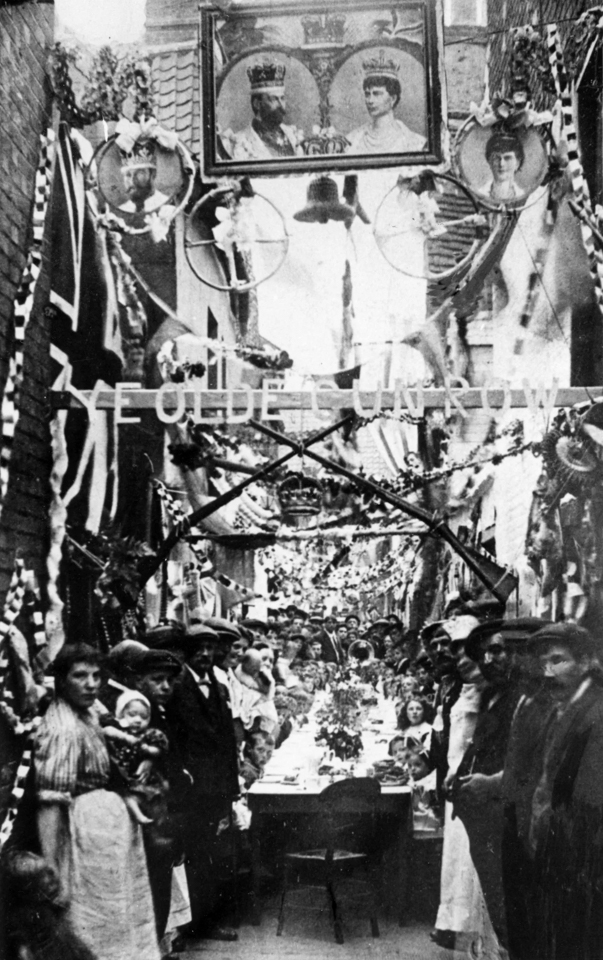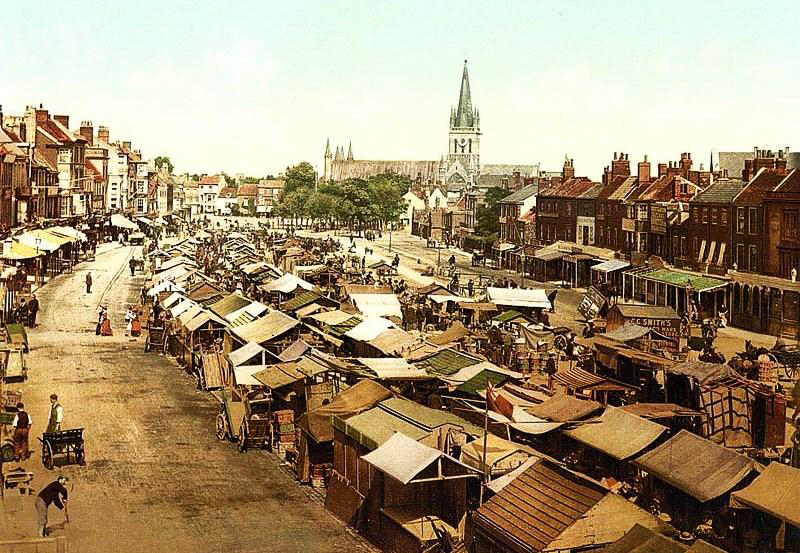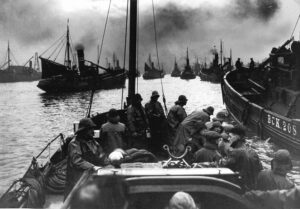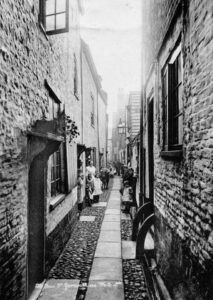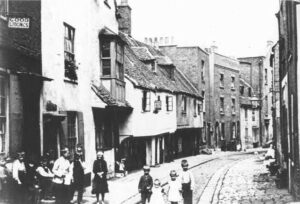Great Yarmouth is a coastal town in Norfolk sat on a sandbar between the River Yare and the sea. Founded in the Middle Ages, the town grew into a wealthy trading centre protected by strong walls.
The town prospered from herring fishing and by the early 18th century was a thriving port with a strong shipbuilding industry, amalgamating nearby Gorleston-on-Sea. Its proximity to the Netherlands also gave rise to a growing naval base. After the arrival of the railway in the 19th century the town developed as a popular seaside resort with several piers built. It was bombarded by the German High Seas Fleet in 1916 and 1918, while during the Second World War it suffered heavily from the air.
The Rows
Charles Dickens said of them:
A Row is a long, narrow lane or alley quite straight, or as nearly as maybe, with houses on each side, both of which you can sometimes touch at once with the fingertips of each hand, by stretching out your arms to their full extent. Now and then the houses overhang, and even join above your head, converting the row so far into a sort of tunnel or tubular passage. Many picturesque old bits of domestic architecture is to be found among the rows. In some rows there is little more than a blank wall for the double boundary. In others the houses retreat into tiny square courts where washing and clear starching was done.
John Doe
The Rows were originally identified by traditional names often taken from notable residents or businesses significant to the row, such as public houses and bakers. Over time each row has been known by many different names. They were finally numbered in 1804, with distinctive black square and white number.
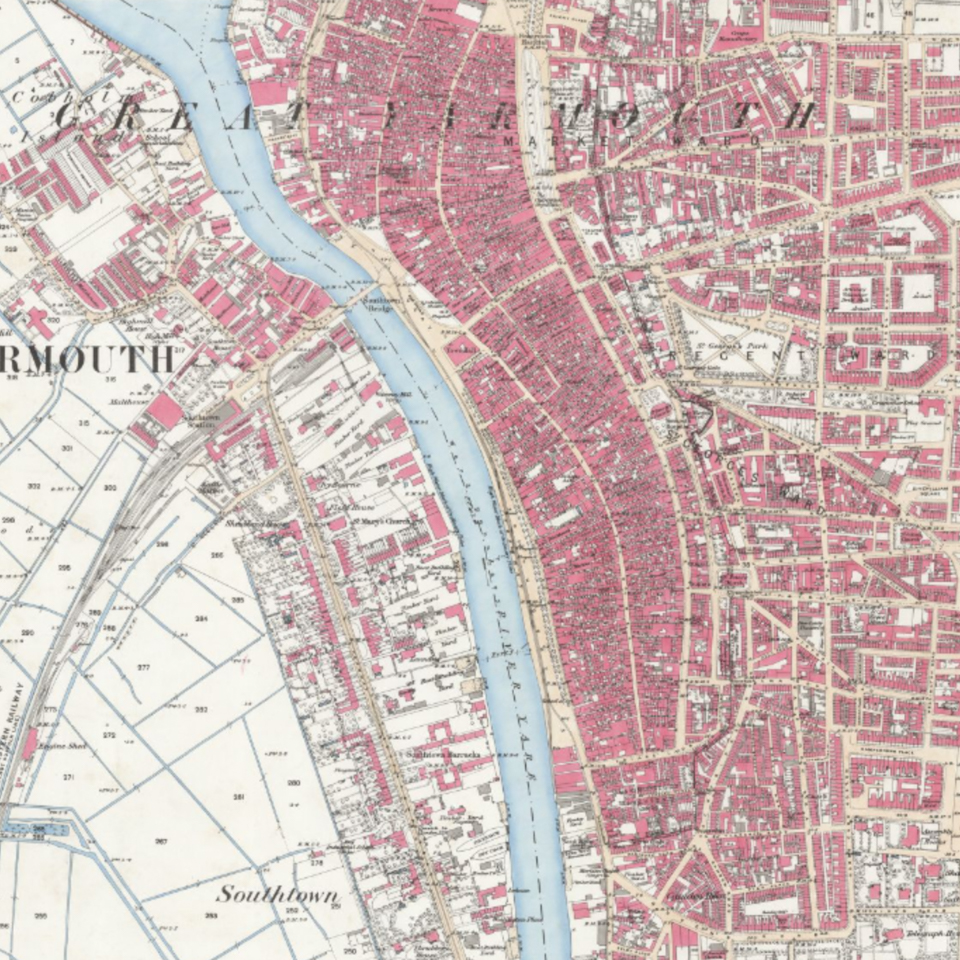
Local shops and merchants needed to transport and deliver stock and goods, yet a standard horse and cart could not fit down the narrow passages. This led to the design of the Troll Cart – able to fit along the narrow rows with the wheels tucked underneath the main body of the cart.
The Rows survived for hundreds of years, despite having suffered many hard times through fire, flooding, disease, and disasters. However, large parts of the old town were destroyed during the Second World War, before the planners continued where the Luftwaffe had left off.
